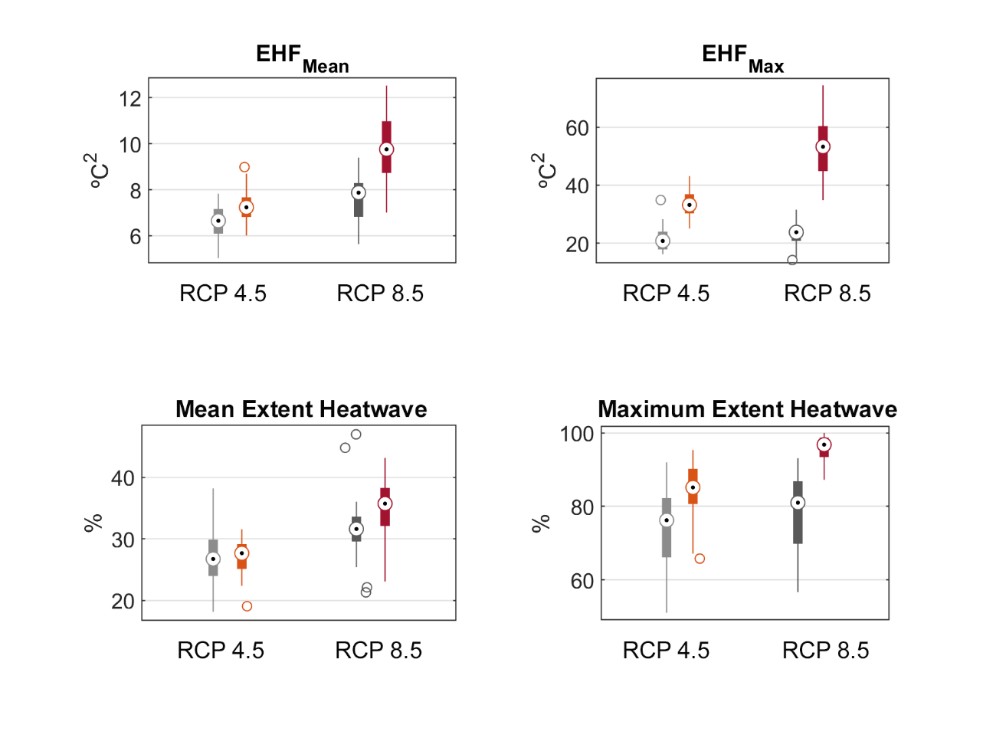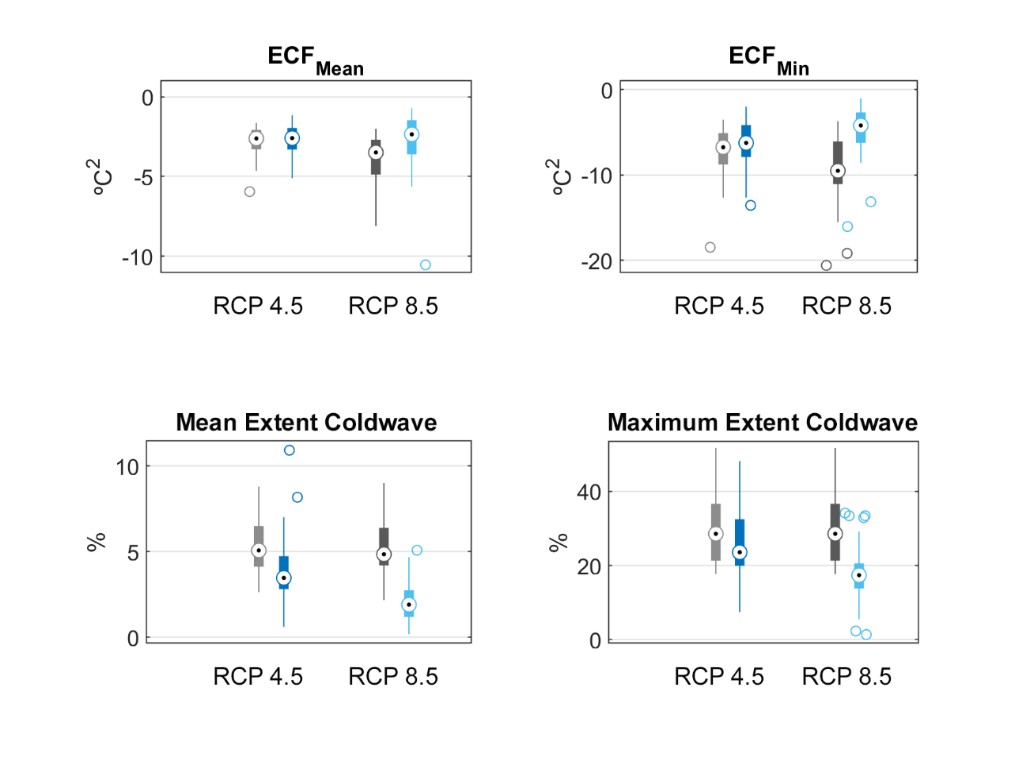Much more intense heat waves between 2050 and 2095
A projection conducted by researchers from Uvigo, USC, and MBG-CSIC forecasts changes in the intensity of heatwaves and cold waves across the Iberian Peninsula and the Balearic Islands.

For the period 2050-2095, heatwaves will be much more intense and occupy a larger spatial extent. Specifically, the average change in maximum intensity of heatwaves is projected to be 144% compared to the interval 1971-2000. Additionally, the average spatial extent of these waves will increase by 1% to 2.7% per decade —depending on greenhouse gas concentration scenarios (RCP, by its acronym in English), 4.5 and 8.5, respectively—, which will significantly amplify wildfire risk, energy demand, and human exposure.
In the case of cold waves, both intensity and spatial extent will decrease. The average change in maximum intensity will be -16%, and the maximum extent will decrease much more than the average extent, with declines ranging from -0.7%/decade to -3.2%/decade, which will imply less exposure. Although the decrease in intensity and spatial extent will be considerable, the RCP 8.5 scenario will record a higher maximum intensity of cold waves in the Iberian Peninsula and Balearic Islands (PIB) than the RCP 4.5 scenario, demonstrating that these phenomena will continue to exist in the second half of the century, even with high radiative forcing.
This is the projection recently conducted by a team integrated by USC, Uvigo, and the Biological Mission of Galicia of the Spanish National Research Council (MBG-CSIC) in the study titled ‘Heat and cold wave intensity and spatial extent on the Iberian Peninsula: future climate projections (2050–2095)’ recently published in Climate Dynamics. The work is a continuation of the analyses of heatwave intensity and spatial extent (Lorenzo et al., 2021) and cold wave intensity and spatial extent (Díaz-Poso et al., 2023) for the first half of the century (2021-2050) in the PIB context.
Impressive regional contrasts

These extreme temperature events can be characterized by four dimensions: frequency, duration, intensity, and spatial extent, with the latter two dimensions being less studied in the spatial context of the PIB. Both were analyzed using the Excess Heat Factor (EHF) and Excess Cold Factor (ECF) indices. These biometeorological indices directly incorporate the aspect of intensity and the human body’s acclimatization process, enabling their use in the evaluation of the effects of waves on population health. “Additionally, their sensitivity to local temperature variations allows for the detection of heat/cold wave conditions in advance, making both indices very useful tools in decision-making in sectors such as agriculture or energy,” explain the research team.
The research also reveals significant regional contrasts. In the case of heatwaves, the highest intensities are recorded in the western part of the peninsula and mountainous areas. The eastern half of the peninsula, and specifically the Mediterranean coast, will record lower intensities. Both the highest trend and the greatest percentage changes in maximum intensity are recorded in the eastern and northeastern regions of the peninsula, where percentage changes of 300% will be reached, doubling the percentage changes projected for 2021-2050.

In the case of cold waves, the highest intensities were recorded in the north and northeast of the peninsula and in mountainous regions, while in the west and southwest of the peninsula, as well as in coastal areas, the intensities will be lower. The decrease in maximum intensity of cold waves compared to 1971-2000 will be less in the RCP 8.5 scenario (-10.1%) than in the RCP 4.5 scenario (-21.6%), and its variability will be greater. On the other hand, its maximum extent will decrease much more than the average extent, with declines ranging from -0.7%/decade (RCP 4.5) to -3.2%/decade (RCP 8.5).
The research team also highlights as an important issue that “in the second half of the century, the difference between RCP 4.5 and 8.5 scenarios (lower or higher greenhouse gas concentrations) will become more pronounced.” “The maximum intensity of heatwaves (EHFmax) and cold waves (ECFmin) in the RCP 8.5 scenario, with higher radiative forcing, will be higher than recorded in both cases for 2021-2050,” they predict.
“In the second half of the century, the difference between RCP 4.5 and 8.5 scenarios (lower or higher greenhouse gas concentrations) will become more pronounced”
For more information
Alejandro Díaz-Poso | a.diaz.poso@usc.es | @alejandroposo.bsky.social
Related articles
____Díaz-Poso A, Lorenzo N, Martí, A, Royé, D (2023). Cold wave intensity on the Iberian Peninsula: Future Climate Projections. Atmospheric Research, 295:107011
https://www.sciencedirect.com/science/article/pii/S0169809523004088
____Lorenzo N, Díaz-Poso A, Royé D (2021). Heatwave intensity on the Iberian Peninsula: Future climate projections. Atmospheric Research, 258:105655.
https://www.sciencedirect.com/science/article/pii/S0169809521002076



